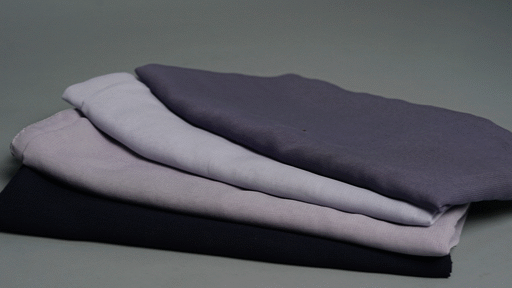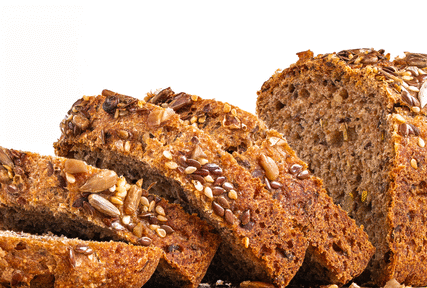Flaxseed bread is a delicious low-carb bread, wholesome alternative to traditional bread, packed with fiber, omega-3 fatty acids, and essential nutrients that support heart health and digestion.
Flaxseed bread is quickly gaining popularity among health-conscious bakers and food lovers alike, and for good reason.
- Health Benefits of Flaxseeds
- Essential Baking Tools and Equipment
- Step-by-Step Flaxseed Bread Recipe
- Tips for Perfect Dough Consistency
- How to Incorporate Flaxseeds for Maximum Nutrition
- Variations: Adding Nuts, Seeds, and Flavors
- Storing and Preserving Flaxseed Bread
- Nutritional Comparison: Flaxseed Bread vs. Traditional Bread
- Serving Suggestions and Recipe Pairings
Health Benefits of Flaxseeds
As low-carb bread alternative, here are the benefits of this flaxseed bread.
- Flaxseeds are a powerhouse of nutrition, making them an excellent addition to your bread for a healthy boost
- Packed with omega-3 fatty acids, flaxseeds help support heart health by reducing inflammation and lowering blood pressure
- They are also rich in dietary fiber, which promotes digestive health, aids in maintaining regular bowel movements
- Helps you feel fuller for longer—making flaxseed bread a great option for weight management
- Flaxseeds contain lignans, plant compounds with antioxidant properties that may help reduce the risk of certain cancers
Essential Baking Tools and Equipment
Here’s a rundown of the essential items you’ll want to have on hand before you start:
1. Mixing Bowls: A set of sturdy, preferably glass or stainless steel mixing bowls is crucial for combining your ingredients thoroughly. These materials are non-reactive, ensuring that the flaxseed and other components maintain their natural flavors.
2. Measuring Cups and Spoons: Precision is key in baking. Accurate measuring cups and spoons help you follow your recipe exactly, especially when working with flaxseed, which can affect the moisture and consistency of your dough.
3. Digital Kitchen Scale: For even greater accuracy, a kitchen scale allows you to measure ingredients by weight. This is particularly helpful for flaxseed, nuts, and seeds, which can vary in volume but have consistent weights.
4. Baking Pan or Loaf Tin: Choose a non-stick or well-greased loaf pan that fits your desired bread size. A typical 9×5-inch pan works well for most flaxseed bread recipes, giving your loaf a nice shape and even baking.
5. Mixing Utensils: Silicone spatulas and wooden spoons are ideal for mixing your dough without overworking it. They make it easy to incorporate flaxseed evenly throughout the batter.
6. Oven Thermometer: To ensure your bread bakes at the correct temperature, especially if your oven tends to run hot or cold, an oven thermometer is a smart investment.
7. Cooling Rack: After baking, placing your loaf on a cooling rack prevents sogginess by allowing air to circulate around the bread, helping it set properly.
Step-by-Step Flaxseed Bread Recipe
Making your own flaxseed bread at home is easier than you might think, and it’s a fantastic way to enjoy a healthy, nutrient-packed loaf that’s both delicious and satisfying.
Follow this step-by-step recipe to bake flaxseed bread that’s perfect for sandwiches, toasting, or simply enjoying fresh from the oven.
Ingredients
- 2 cups whole wheat flour
- 1/2 cup ground flaxseed
- 1 cup warm water (about 110°F/43°C)
- 2 tablespoons honey or maple syrup
- 1 packet (2 1/4 teaspoons) active dry yeast
- 1/4 cup olive oil or melted coconut oil
- 1 teaspoon salt
Instructions
1. Activate the yeast: In a small bowl, combine the warm water, honey, and yeast. Stir gently and let it sit for about 5-10 minutes until it becomes frothy. This step ensures your yeast is alive and ready to help your bread rise.
2. Mix dry ingredients: In a large mixing bowl, whisk together the whole wheat flour, ground flaxseed, and salt. This evenly distributes the flaxseed throughout the flour for consistent flavor and texture.
3. Combine wet and dry ingredients: Pour the yeast mixture and olive oil into the dry ingredients. Stir using a wooden spoon or your hands until a dough forms. If the dough feels too sticky, add a little more flour, a tablespoon at a time.
4. Knead the dough: Transfer the dough onto a lightly floured surface and knead for about 8-10 minutes until it becomes smooth and elastic. Kneading develops the gluten structure, giving your bread a perfect crumb.
5. First rise: Place the dough in a lightly oiled bowl, cover it with a clean kitchen towel, and let it rise in a warm, draft-free area for about 1 to 1.5 hours, or until it doubles in size.
6. Shape the loaf: Once risen, punch down the dough to release excess air. Shape it into a loaf and place it into a greased loaf pan. Cover again and allow it to rise for another 30-45 minutes.
7. Preheat the oven: While the dough is undergoing its second rise, preheat your oven to 375°F (190°C).
8. Bake: Bake the loaf for 30-35 minutes, or until the top is golden brown and the bread sounds hollow when tapped. An instant-read thermometer inserted into the center should read about 190°F (88°C).
9. Cool: Remove the bread from the oven and let it cool in the pan for 10 minutes before transferring it to a wire rack to cool completely. This prevents the bottom from becoming soggy.
Tips for Perfect Dough Consistency
First, be mindful of the liquid-to-flour ratio. Flaxseeds, especially when ground, tend to soak up more water, so you might need to slightly increase the amount of liquid in your recipe.
However, avoid adding too much at once—add liquids gradually while mixing to find the perfect balance.
Next, pay attention to the texture.
- Your dough should be soft and slightly tacky but not overly sticky
- If it sticks excessively to your hands or the bowl, sprinkle in a little more flour, a tablespoon at a time.
Conversely, if the dough feels too dry or crumbly, add a teaspoon of water or milk until it becomes smooth and pliable.
Another helpful tip is to allow the dough to rest for 10 to 15 minutes after mixing. This resting period helps the flaxseeds fully absorb moisture, making the dough easier to knead and improving its elasticity.
Lastly, don’t over-knead. Because flaxseed bread tends to have a denser texture, kneading just until ingredients are combined and the dough is smooth is sufficient. Overworking the dough can make it tough and affect the bread’s final softness.
How to Incorporate Flaxseeds for Maximum Nutrition
Incorporating flaxseeds into your bread not only adds a delightful nutty flavor but also boosts the nutritional profile of your loaf significantly.
To maximize the health benefits, it’s best to use ground flaxseeds rather than whole seeds. Nutritionist Nicola Shubrook asserts that grinding enhances the flaxseeds’ potential protective benefits against menopausal symptoms.
Grinding breaks down the tough outer shell. This makes the valuable omega-3 fatty acids, fiber, and lignans more bioavailable for your body to absorb.
You can easily grind flaxseeds at home using a coffee grinder or purchase pre-ground flaxseed meal from stores.
When adding flaxseeds to your bread recipe, aim for about 2 to 4 tablespoons of ground flaxseed per loaf.
You can mix them directly into the dry ingredients or incorporate them into the wet ingredients, depending on your recipe.
Another effective method is to use flaxseed meal as an egg substitute for a vegan-friendly option:
- combine 1 tablespoon of ground flaxseed with 3 tablespoons of water
- let it sit for 5 minutes until it forms a gel-like consistency
- then add it to your dough.
Additionally, consider soaking whole flaxseeds overnight before adding them to your bread dough. This softens the seeds and enhances digestibility while adding a pleasant texture to the final product.
Variations: Adding Nuts, Seeds, and Flavors
One of the best ways to elevate your flaxseed bread and make it uniquely your own is by experimenting with variations that add texture, flavor, and nutritional benefits. Incorporating nuts like walnuts, almonds, or pecans can introduce a satisfying crunch and a boost of healthy fats and protein.
Similarly, adding a mix of seeds such as chia seeds, pumpkin seeds, or sunflower seeds enhances the bread’s visual appeal. It also increases its fiber and mineral content.
Don’t hesitate to play with flavors to suit your taste preferences. For a touch of warmth, try adding spices like cinnamon, nutmeg, or cardamom.
If you prefer a savory twist, herbs like rosemary, thyme, or even a sprinkle of garlic powder can transform your bread into a flavorful accompaniment to soups and salads.
You can also experiment with natural sweeteners such as honey or maple syrup for a subtle sweetness that complements the nutty flavor of flaxseed.
Storing and Preserving Flaxseed Bread
Properly storing and preserving your flaxseed bread is essential to maintain its freshness, flavor, and nutritional benefits. Because flaxseed bread often contains fewer preservatives than commercial breads, it can spoil more quickly if not handled correctly.
To keep your loaf fresh:
- First allow the bread to cool completely after baking—this prevents excess moisture buildup, which can lead to mold
- Once cooled, store the bread in an airtight container
- You may also wrap it tightly in plastic wrap or aluminum foil to prevent exposure to air
For short-term storage, keeping the bread at room temperature in a cool, dry place is ideal, but consume it within 2 to 3 days to enjoy optimal texture and taste.
If you want to extend the shelf life, freezing is your best option.
- Slice the flaxseed bread before freezing so you can easily take out just what you need.
- Wrap individual slices or the whole loaf tightly in plastic wrap
- Then place it in a resealable freezer bag to prevent freezer burn
However, “freeze the bread for up to three months. Any longer, and it may get freezer burn,” says Sharon Lehman.
When ready to eat, thaw the bread at room temperature or toast slices directly from the freezer for a warm, fresh taste. By following these storing and preserving tips, you can enjoy your healthy, delicious flaxseed bread anytime without compromising quality.
Nutritional Comparison: Flaxseed Bread vs. Traditional Bread
Flaxseed bread is packed with nutrients that offer numerous health benefits. This quality makes it an excellent choice for those looking to boost their diet without sacrificing flavor.
First and foremost, flaxseed bread is rich in omega-3 fatty acids, which are essential for heart health and are rarely found in significant amounts in conventional bread. These healthy fats help reduce inflammation and support brain function.
Additionally, flaxseed bread contains a higher amount of dietary fiber—both soluble and insoluble. This promotes better digestion, stabilizing blood sugar levels, and helping you feel fuller for longer.
In contrast, traditional white bread is often made from refined flour, which has been stripped of many nutrients and fiber. This can lead to quicker spikes in blood sugar and less sustained energy.
Whole wheat bread offers more fiber and nutrients than white bread, but it still typically lacks the concentration of healthy fats and lignans (a type of antioxidant) found in flaxseed.
Moreover, flaxseed bread provides a good source of plant-based protein and essential minerals such as magnesium, manganese, and phosphorus, contributing to overall wellness. These nutrients support muscle function, bone health, and energy metabolism.
Serving Suggestions and Recipe Pairings
For a simple and satisfying snack:
- try spreading a generous layer of creamy avocado across a slice of warm flaxseed bread
- then sprinkle with a pinch of sea salt, freshly cracked black pepper, and a dash of chili flakes for a subtle kick.
This combo provides healthy fats and fiber, perfect for a midday boost.
If you’re looking to create a more substantial meal, flaxseed bread serves as an excellent base for open-faced sandwiches.
Top it with smoked salmon, a smear of light cream cheese, capers, and fresh dill for a flavorful, omega-3-rich treat.
Alternatively, layer it with roasted vegetables, hummus, and a handful of leafy greens to satisfy both your taste buds and nutritional needs.
For breakfast lovers:
- toast and top your flaxseed bread with natural peanut butter and sliced bananas
- this offers a delightful balance of protein, fiber, and potassium to start your day right
- Pair it with a cup of herbal tea or freshly brewed coffee for a comforting morning ritual
When serving flaxseed bread alongside soups and salads, its dense texture complements lighter dishes perfectly.
- Try it with a bowl of tomato basil soup or a crisp garden salad
- Then dress it with lemon vinaigrette to add substance and flavor to your meal




